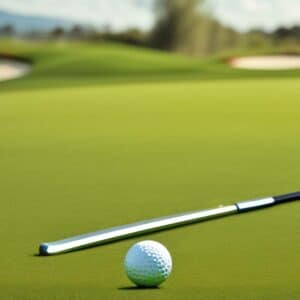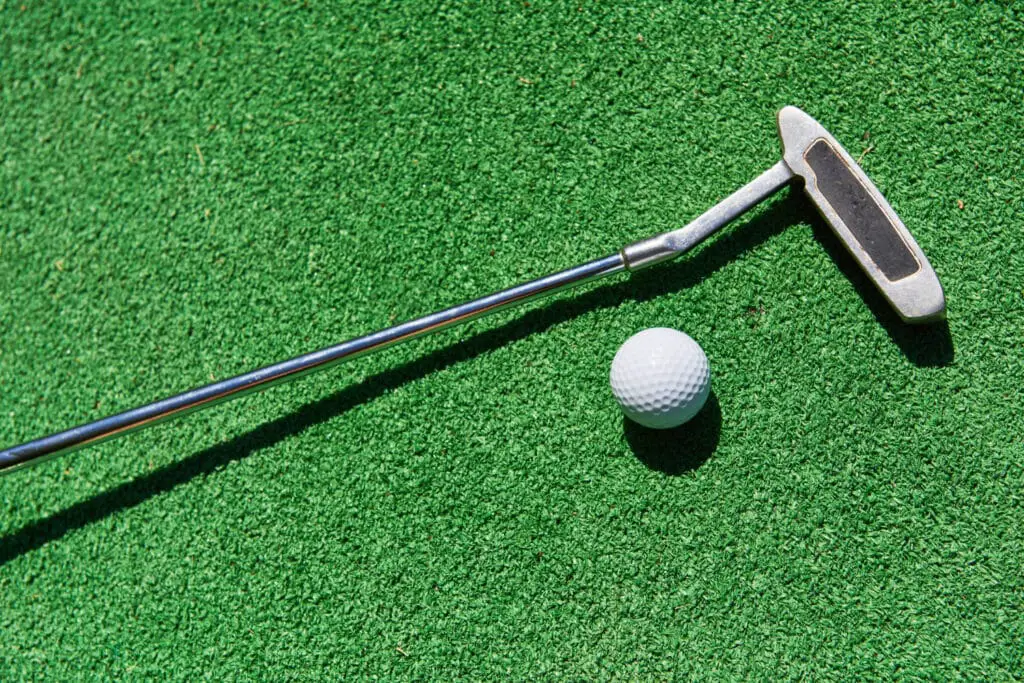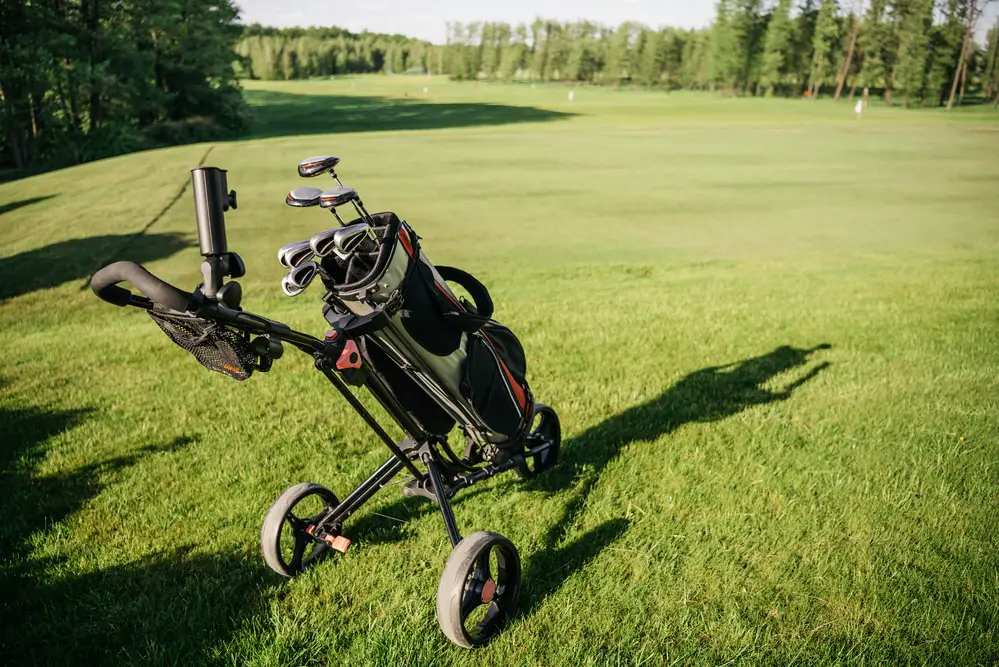Last Updated on June 7, 2023
Are you a golfer looking to improve your game? If so, shortening the shaft of your golf club could be one of the best ways to do just that. Many people don’t realize how much difference an inch or two can make on their swing and accuracy – but it turns out, it’s significant! In this article, we’ll show you exactly how to shorten golf club shafts for maximum performance benefits. So if you’re ready to take your skills up a notch, read on to find out what you need to know.
Removing The Grip
Removing a golf grip is the first step in shortening a club shaft. There are several ways to do this and most involve using some kind of heat source. One way is to heat up the area where the grip begins with a hair dryer or heat gun for about thirty seconds, then simply pull off the old grip. If that doesn’t work, you can use a specialized tool such as a razor blade or pocket knife to help lift away the grip from its adhesive backing.
When it comes time to replace your golf grip, there are a few things to keep in mind. First, make sure you have the correct size and style of replacement before taking off the old one. Also, be sure to clean any residue left on the shaft by wiping it down with rubbing alcohol or an abrasive cleaner like WD-40. Finally, when installing your new grip, use two sided tape along with solvent based glue in order to secure it properly and ensure maximum durability.
Clamping The Shaft
The first step to shorten golf club shafts is clamping the shaft. You will need a golf club shaft clamping device, such as a shaft cutting jig. The jig should be able to hold the entire length of the golf club securely and firmly in place so that it can safely be sawed off. Be sure to wear protective gear when performing this task, as sparks from the saw may fly from the metal as you are cutting.
When using the saw or other cutting tool, make sure not to cut too fast or take big chunks out of the golf club at once; rather, cut slowly and steadily until you reach the desired length. Once complete, unclamp your workpiece and use an emery cloth or sandpaper on any areas where there is excess burring caused by sawing. This will ensure smooth edges on your newly shortened clubs for optimal performance.
Sawing The Shaft

When sawing a golf shaft to shorten it, you’ll need a few specialized tools, including a hacksaw and something called a mandrel. A mandrel looks like an oversized drill bit with threads at one end and is designed specifically for cutting down golf club shafts. It’s important to note that the mandrel must be the same size as your golf shaft in order to get an accurate cut. You should also use high-quality blades such as carbon or bi-metal blades for the best results when sawing your golf club shafts.
Once you have all the necessary materials, start by clamping the golf shaft into place on your workbench so that it doesn’t move while you’re sawing. Make sure to leave enough of the grip exposed so that you can comfortably hold onto it while working. Then take your hacksaw and begin slowly but steadily making small cuts until you reach the desired length; remember not to rush this process since precision is key when shortening any type of golf club shafts. Once finished, make sure to sand down any sharp edges before installing new grips and putting them back in play!
Re-Gripping The Club
Once you’ve shortened your golf club shafts, the next step is re-gripping them. Replacing a grip on a golf club is an important part of maintaining it and its playability. There are several types of grips to choose from:
- Wraps – These are soft, rubberized grips that have small ridges running along the length for better traction. They come in various thicknesses and colours, allowing you to customize your clubs’ feel according to your preference.
- Rubber/Corded Grips – This type of grip offers more cushioning than wraps and also provides more shock absorption during impact with the ball. It also has more texture which helps prevent slippage when swinging.
- Leather Grips – These provide the most traditional look and feel for older players who want their clubs to resemble those used decades ago.
Additionally, there are different techniques for installing these grips, depending on whether they’re wrapped or corded/rubber ones. For wrap styles, you’ll need a solvent and double-sided tape; for corded/rubber models, you’ll require adhesive spray and an air compressor (if available). All of this can be done at home as long as you take your time and follow the instructions carefully so that everything fits snuggly together without any gaps or inconsistencies in size or shape. After installation is complete, your clubs should now be shorter while still providing adequate performance levels due to the new grip material being put into place!
Testing And Adjusting Length
Before cutting the shaft, it is important to accurately measure and adjust its length. Testing how a golf club fits your body can help customize the overall length for improved performance on the course.
| Test | Action |
|---|---|
| Measure grip size & distance from ground to wrist joint | Cut accordingly to improve the speed & accuracy of shots |
| Adjust if necessary to fit the player’s height & arm length | Customize for optimal impact and control of the ball flight path |
| Confirm new settings with practice swings on course or range | Customize for optimal impact and control of ball flight path |
Once you have tested and adjusted your golf club shaft, you are ready to cut off any excess material so that it meets your specifications. Be sure to use proper safety equipment, such as goggles and gloves, when completing this task. With these steps completed, you will be able to enjoy the improved performance while playing out on the links!
Conclusion
In conclusion, shortening a golf club shaft is an important part of customizing your clubs for maximum performance. It’s essential to have the correct measurements before you start cutting and understand how much it will affect the performance of the club. A clamp should always be used when sawing the shaft, and a high-quality saw is best in order to achieve clean cuts. Finally, after re-gripping the club, make sure that it fits correctly so that you can enjoy your customized clubs on the course.


